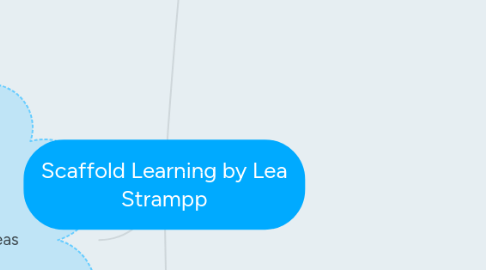
1. Specific Objective Scaffold
1.1. Students will know how to create an essay introduction where they clearly state their opinion.
1.1.1. Scaffold Activities
1.1.1.1. What is an opinion?
1.1.1.1.1. The teacher put a line of tape in the center of the classroom as a dividing line. The teacher can read off a list of "hot topics". The students who agree with the statement can stand on right side of the tape, and the students who disagree can stand on the left side of the tape.
1.1.1.1.2. The students can work in pairs and fill in a Venn Diagram where they list the statements they both agree with and individually agree with.
1.1.1.2. What to include in an essay introduction.
1.1.1.2.1. Introduce the topic
1.1.1.2.2. State Your Opinion
1.1.1.3. Students write Introductions
1.1.1.3.1. Students are given the topic; Do you think smart phones are good or bad? Why?
1.2. Students can use outside sources to gather information about their topic to support their opinions
1.2.1. Scaffold Activities
1.2.1.1. Collecting information
1.2.1.1.1. Students learn key vocabulary words to help advance their conversation skills on the topic
1.2.1.1.2. Students learn a few reliable websites to search for information on their topic
1.2.1.1.3. Students must find 5 facts from previously mentioned websites that support their opinion.
1.3. Students can write an essay with details that support their opinion.
1.3.1. Scaffold Activities
1.3.1.1. Class Discussion
1.3.1.1.1. Groups of students with similar opinions discuss their findings together.
1.3.1.1.2. The whole class discusses the topic with the teacher. Students are asked if they have any personal experiences that help support their arguments.
1.3.1.2. Class Debate
1.3.1.2.1. Students gather all of their details and personal experiences that support their opinion.
1.3.1.2.2. Each group takes a turn presenting their opinion and supporting their opinion.
1.3.1.2.3. After hearing the opposite team's argument, each group will discuss how to respond to their opposition. Then each team will present their rebuttle.
1.4. Students can effectively organize their thoughts within the essay
1.4.1. Scaffold Activities
1.4.1.1. Bubble Map
1.4.1.1.1. Students will use a bubble map to organize the supporting details for each of their main ideas.
1.4.1.2. Practice Essay
1.4.1.2.1. Students write a sample essay where they group their ideas into main idea paragraphs and include all the supporting details for each main idea. They can use the bubble map as their guide.
1.5. Students can write a conclusion that restates their opinion and reiterates the major points.
1.5.1. Scaffold Activities
1.5.1.1. Students learn the contents of a good essay conclusion
1.5.1.1.1. In groups, students read several sample essay and decide which conclusion they think is the most impressive.
1.5.1.1.2. The groups look again at the conclusion they liked the best and try to determine what qualities it has that make it impressive
1.5.1.1.3. Students generate a list of qualities a conclusion should have
1.5.1.2. Rough Draft
1.5.1.2.1. Students try to write a conclusion for their paper that contains all of the qualities from the lists they made
1.5.1.2.2. Students exchange papers and peer review. After hearing feedback from their partner, they can re-write and try again.
